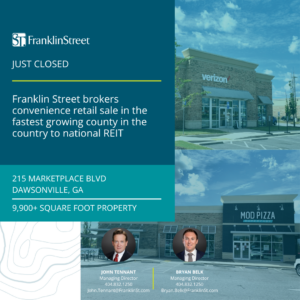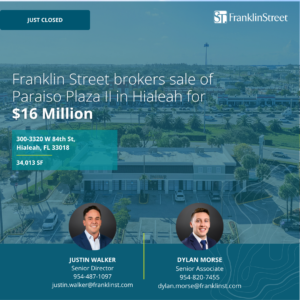Much like the fruit for which Georgia is known, the multifamily market in Atlanta looks sweet for 2014. In 2013, we experienced a renewed investor interest in Atlanta’s multifamily market, fueled by an uptick in employment and an improving local economy. Between October 2012 and October 2013, 63,300 jobs were created, according to the Georgia Department of Labor.
Highest rents ever
Through new job creation and an increase in the quality of urban rentals, Atlanta experienced its highest rents ever in 2013. New urban product is being absorbed with higher rents and velocity than expected by developers without any measurable impact on surrounding product. In fact, Class B and C properties have seen steady rent growth with almost nonexistent concessions.
Core metro markets remain most popular for both renters as well as investors. Today’s renters want the “live, work, play” experience, which is being reflected in where they are choosing to live. Proximity to public transportation is increasingly important to young professionals.
Investors eye the market
Investors are flocking to Atlanta from around the country and, in some cases, the world. International money from countries like South America, Canada and Israel is flowing into the Atlanta market as investors are looking for stable and value-add properties that will provide a solid return on their investment. We have also experienced a wave of investors from Florida and other coastal areas making a push in Atlanta as a result of higher operating costs in their markets associated with the Biggert-Waters Flood Insurance Reform Act, which went into effect on Oct. 1, 2013.
Investors looking for distressed multifamily assets won’t find many of them in Atlanta, as there’s been a significant drop-off in terms of REO and bank-owned properties for sale. Many investors acquired value-add properties in Atlanta between 2010 and 2012, and we are seeing some of the renovated products recently trading or being brought to market. In some submarkets, these properties are trading at three times their distressed acquisition cost.
Construction
In 2013 we saw a renewed interest and a number of land transactions that involved not only raw land, but existing multifamily complexes. Because the zoning is already in place for those multifamily developments, developers can avoid long entitlement periods in highly sought after markets and begin construction in a timely manner.
Currently, there are more than 10,000 apartment units planned and under construction in Atlanta, but this is well below many similar populated cities throughout the country. (such as? Miami?)With the for-sale market also starting to see some movement, we anticipate that some projects that are in the early stages will transition into for-sale product. Townhouse developers are making an offsetting impact to overdevelopment by gobbling up existing older apartment complexes for the zoning and effectively lowering the density with for-sale product.
Outlook for 2014
In 2014, we expect that the Atlanta multifamily market will remain strong and rents will continue to improve along with occupancy. We expect to see additional investment activity from outside investors both domestic and international as Atlanta’s fundamentals have been proven during the last 12 months despite previous misconceptions. A slight uptick in interest rates is anticipated, but it isn’t expected to have an immediate impact on values outside of a few deals that are being underwritten with very thin margins.
As always, the Atlanta market is heavily influenced by construction and the continued influx of population along with major development projects, such as the Falcons stadium and Braves mixed-use complex bode well for Atlanta’s outlook. Download PDF



